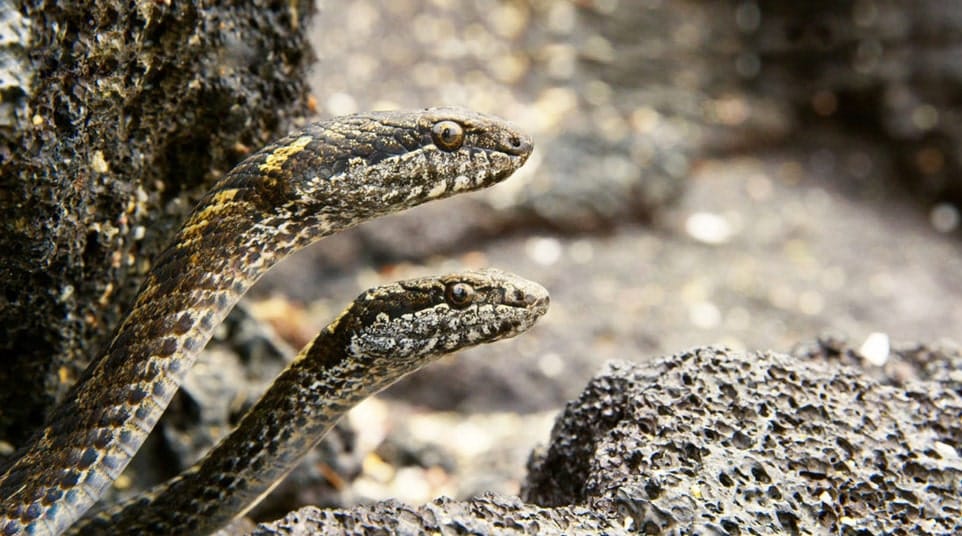- Home >
- Galapagos >
- Animals & Wildlife >
- Galapagos Floreana/Espanola/ San Cristobal Snake
Galapagos Floreana/Espanola/San Cristobal Snake Facts
Name: Floreana/Espanola/San Cristobal Snake
Family: Colubridae
Scientific name: Philodryas biserialis
Length: Up to 120 cm (39 in) sheds skin up to once per year to grow
Weight: N/A
Category: Reptiles
Number of Species: 28
Endemic Species: 19
Twenty eight species of reptiles have been recorded in Galapagos in recent times. Nineteen of these species are endemic to the archipelago, 11 of which are confined to single islands, and three species have been introduced.
Category: Reptile
Family: Colubridae
Length: Up to 120 cm (39 in)
Three species of snakes have been recorded in Galapagos (3 terrestrial indigenous residents, two of which are represented by 3 subspecies and the other by 2 subspecies). Endemic species include the Floreana Snake (which includes named subspecies Española Snake and San Cristobal Snake), the Galapagos Snake (which includes named subspecies Fernandina Snake and Isabela Snake), and Slevin's Snake (which includes named subspecies Steindachner's Snake).
Locally fairly common. Three named subspecies occur, mainly in the arid and shore zones: Floreana Snake biserialis (Champion, Floreana and Gardner-near- Floreana), Española Snake hoodensis. (Española and Gardner-near- Española) and San Cristobal Snake eibli (San Cristobal). They feed by constricting their prey, although slightly venomous.
Identification:
Virtually impossible to identify unless examined in the hand, identification being confirmed on the basis of the shape, pattern and number of scales on certain parts of the body. However, this species only occurs on islands from which the two other species that occur in Galapagos are absent. As with the other species, predominantly brown with yellow stripes or dark grey with yellow spots on the upper-side forming a zigzag pattern.

